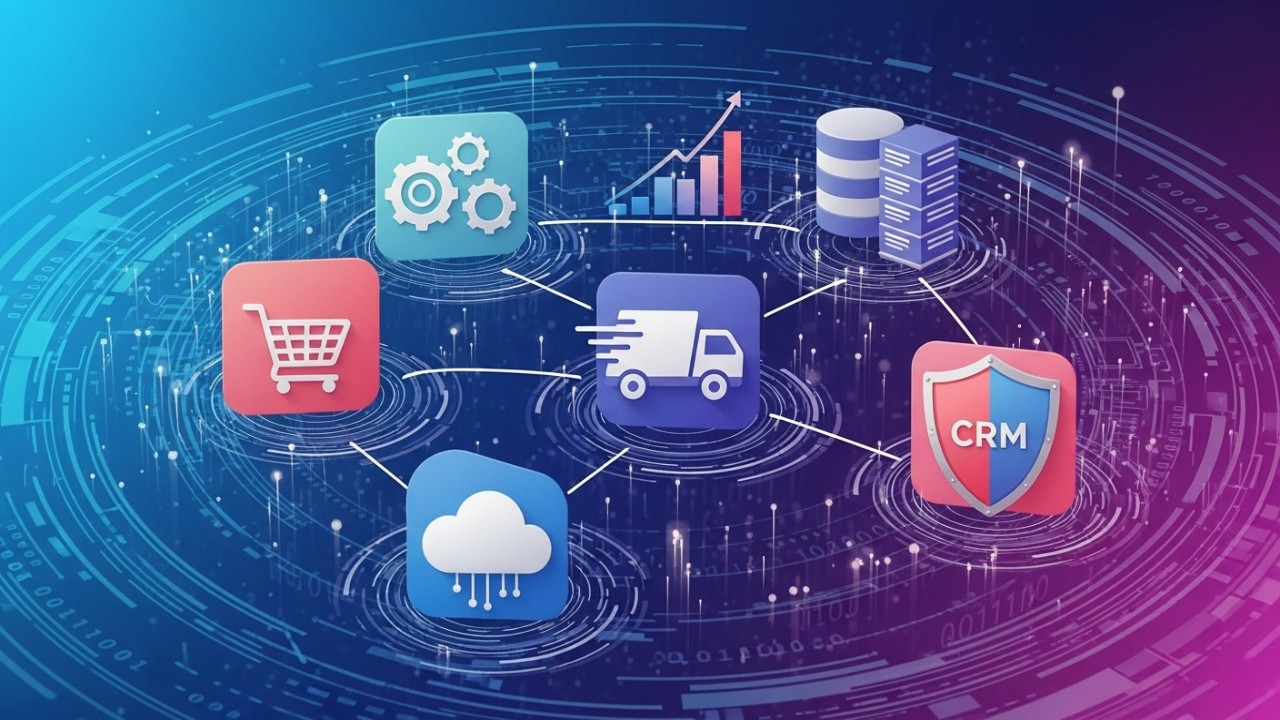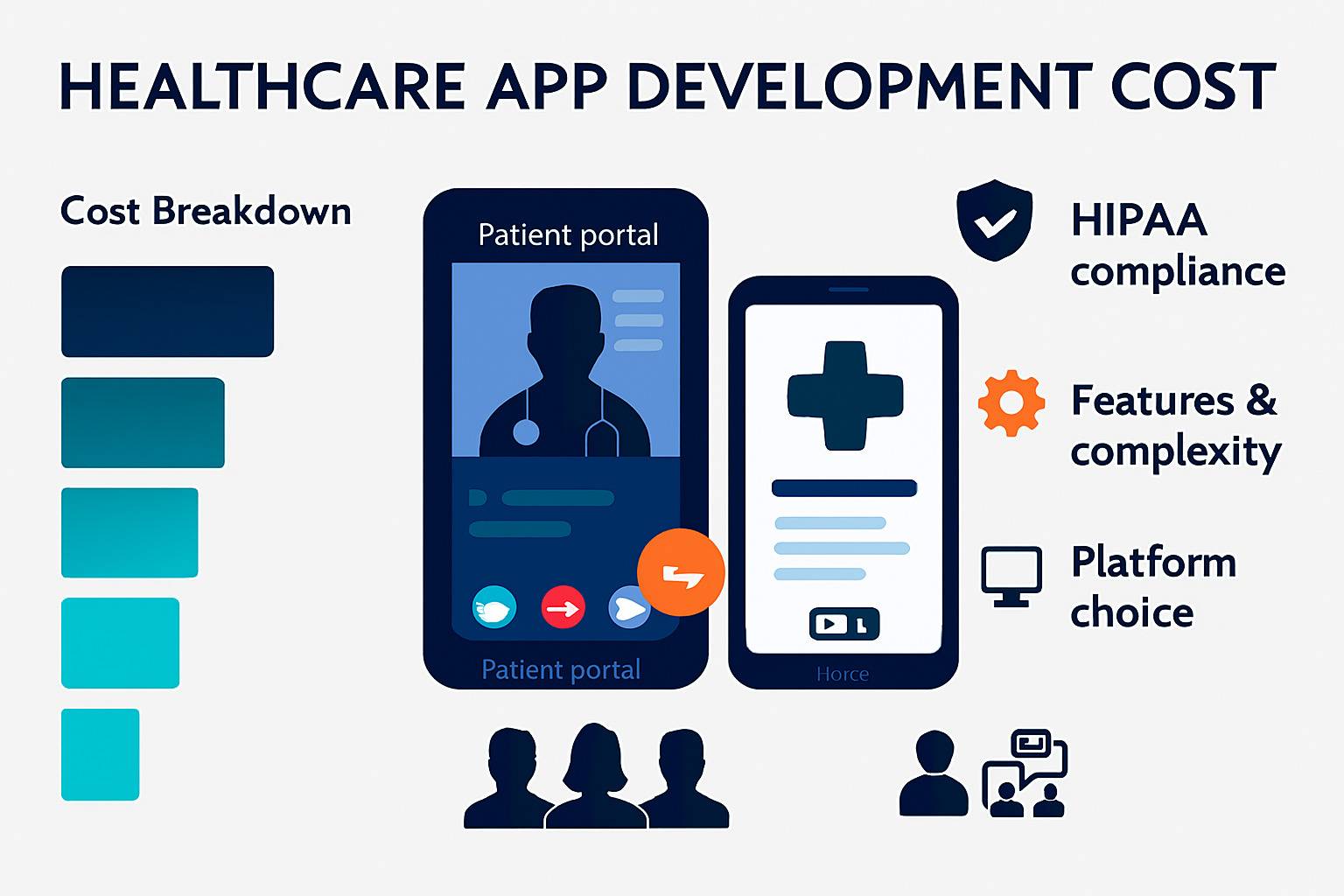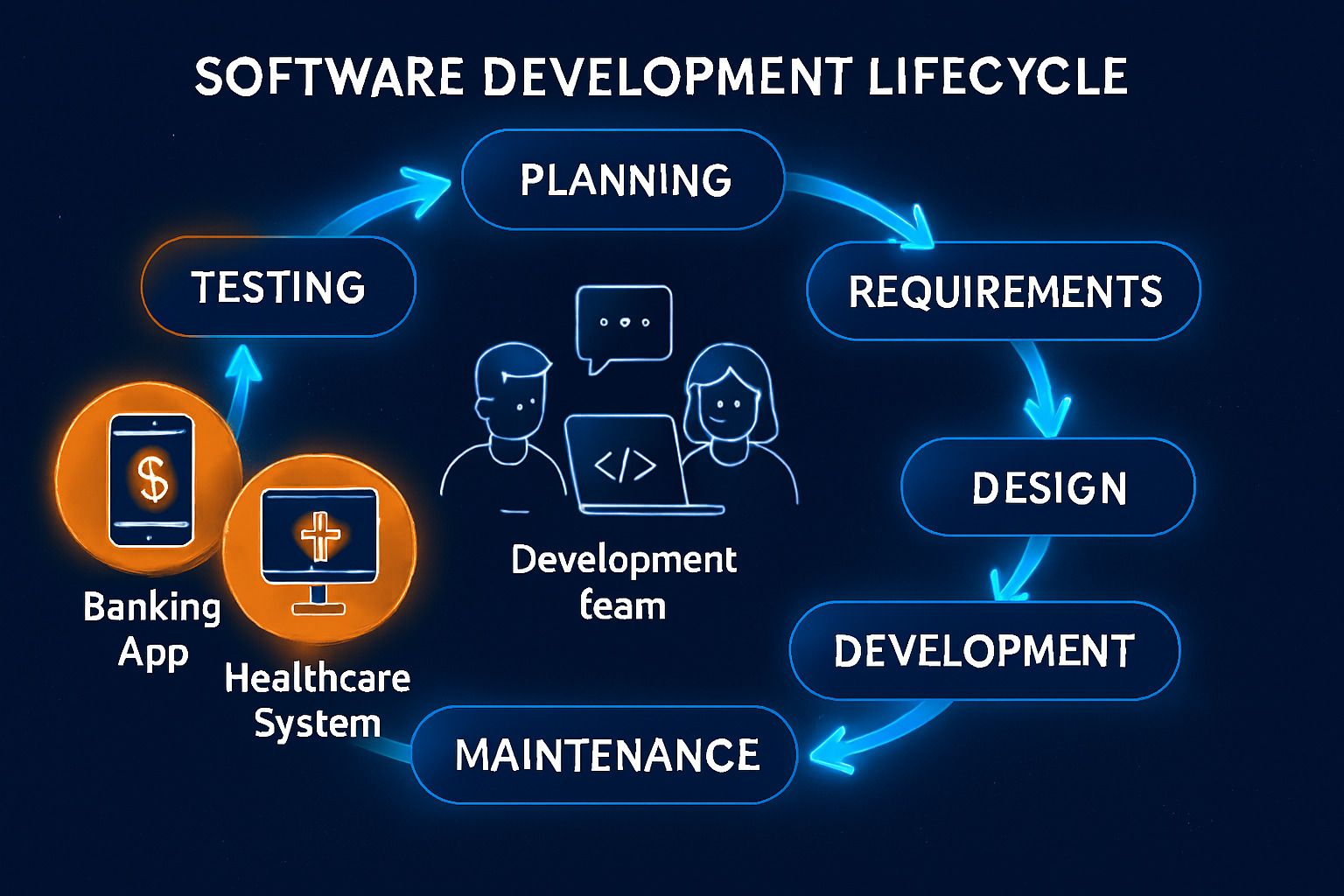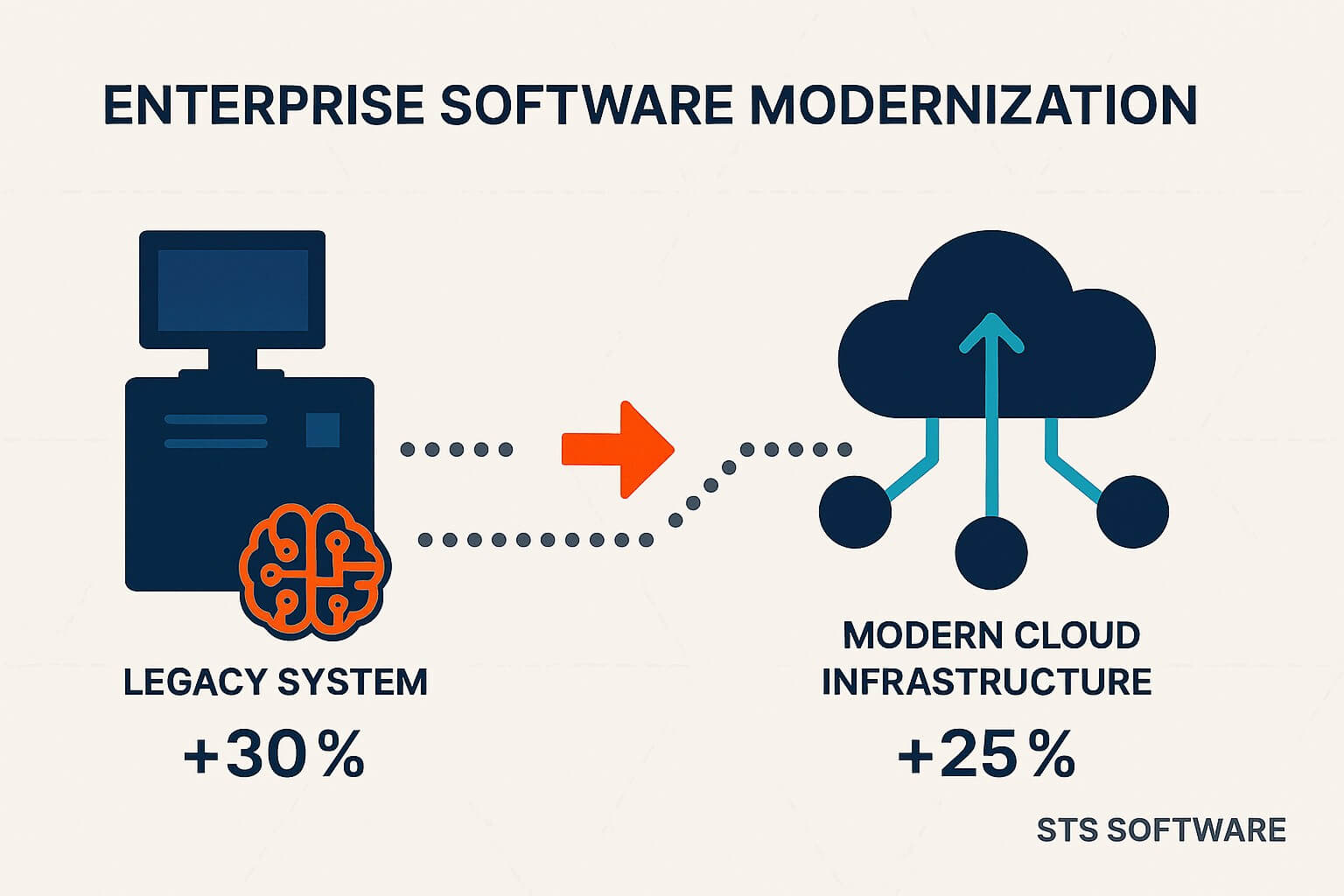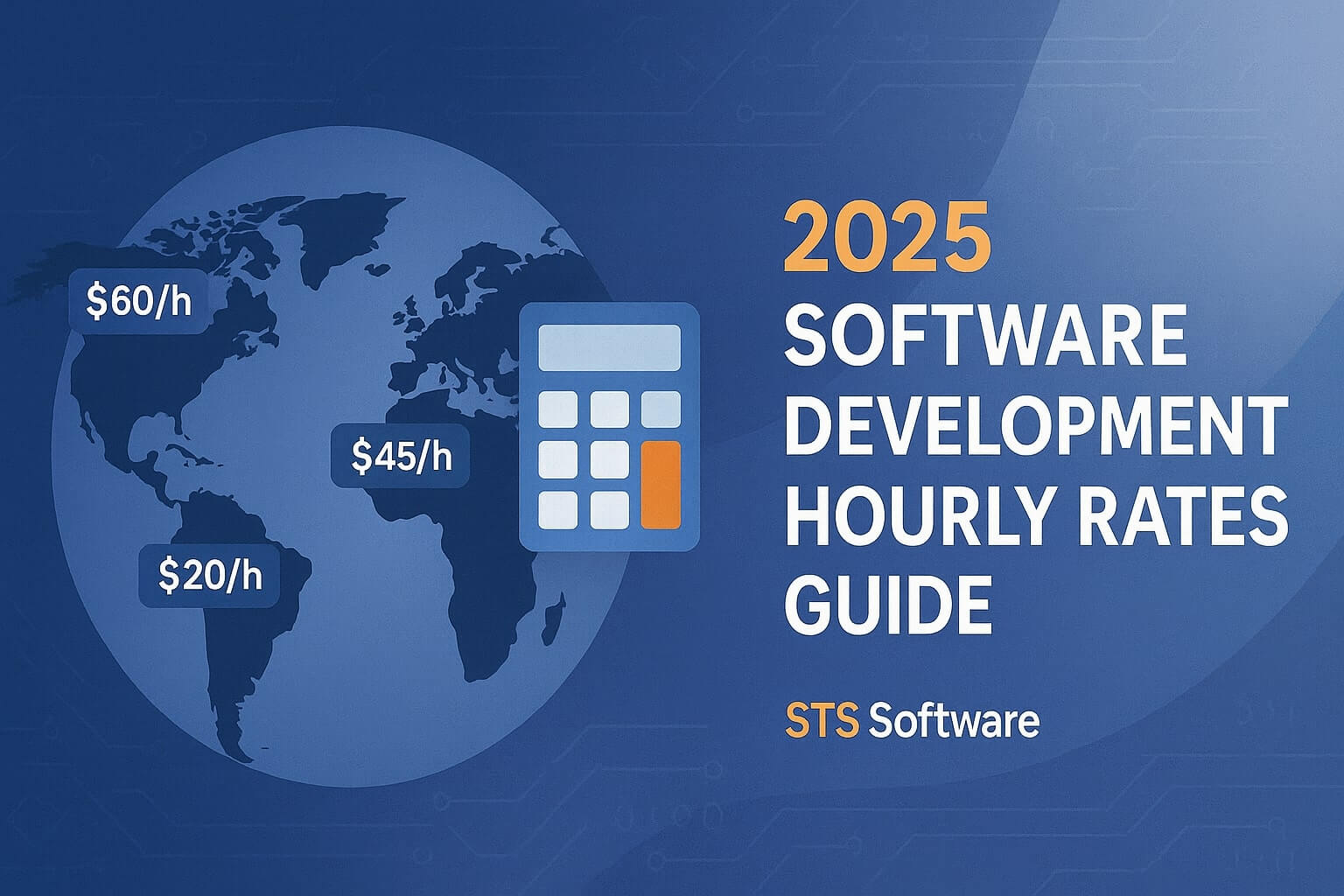Arguably, the most frequently asked question that we receive at STS Software from clients is, “How much does custom software development cost?”
It is a tough question, even for professionals in this field. The truth is, there’s no single price applicable to all custom software. Each project is unique and different, making the Custom Software Development Cost dependent on many variables—from the project scope and complexity to the technologies applied and structure of the team.
Recent statistics from Statista forecast that by 2025, the market for application development will surpass $195 billion, showing how rapidly the demand for tailored digital solutions is growing. Understanding the potential cost of your software project is essential in planning strategically and setting it up for success.
So, how does one make an educated estimate? It begins with a definition of your business goals and objectives, and what you want to get out of custom software. Clear those goals, and we can evaluate the seven key factors that most significantly affect your overall Custom Software Development Cost.
Why Custom Software Development Costs Matter?
Understanding custom software development costs is more than just setting a budget — it’s about making informed decisions that align investment with long-term business value. The cost of custom software development can vary widely based on the project’s complexity, scope, and desired functionality.
Typically, custom software development costs range anywhere from $100,000 to over $400,000, depending on the size and scale of the solution.
- Smaller applications often fall between $100,000 and $200,000.
- Mid-sized systems generally range from $200,000 to $400,000.
- Enterprise-level or large-scale platforms can exceed $400,000 due to advanced integrations, compliance requirements, and scalability demands.
Since no two custom-built systems are identical, accurately defining your project’s scope and objectives is essential before estimating how much custom software development costs. A simple internal tool, for instance, differs drastically in effort and infrastructure from a complex enterprise platform designed to serve thousands of concurrent users.
To get a clearer picture of the average cost of custom software development, it helps to examine the primary elements that influence pricing.
How much does custom software development cost?
Custom software development costs can feel like a mystery, but they’re not random. They come straight from what your project needs—like its size, features, and where you build it.
In 2025, expect to pay anywhere from $20,000 for a basic app to over $500,000 for a big enterprise system. This guide breaks it down into eight key factors with real estimates. Use it to get a clear picture and plan your budget.
Project Size and Complexity
Bigger projects cost more because they need more work. A simple app with basic tasks—like adding, editing, or viewing data—runs about $20,000. But if you add fancy stuff like AI that predicts trends or real-time analytics, it jumps to $300,000 or higher. Start small to keep costs down, then grow from there.
Software Type and Platforms
The kind of software matters a lot. Web apps are cheaper and easier to build. Mobile apps cost more if you need both iOS and Android. Enterprise tools for big companies add even more. Going cross-platform—meaning it works on multiple devices—tacks on 15-25% extra. Pick what fits your users to avoid overpaying.
Technology Stack Choices
Your tech tools shape the price. Free open-source options like React for the front end and Node.js for the back keep things under $100,000. But high-end tech like blockchain for secure transactions can push it to $150,000 or more. Go with proven, affordable stacks unless you need something special.
UI/UX Design Depth
How your app looks and feels affects costs. A basic setup with simple buttons and screens costs around $10,000. For a smooth, responsive design that works on phones and adapts to users—with testing to make sure it’s easy—budget $30,000 to $50,000. Good design pays off by keeping users happy and coming back.
Team Size and Expertise
More people mean higher bills, but they speed things up. A solo freelancer can handle a small job in 2-3 months for less cash. For enterprise work, a team of 10+ developers takes 6 months or longer and costs way more. If your team lacks skills in areas like security, add 20% for experts. Match the team to your project’s needs.
Outsourcing Location and Hiring Model
Where you hire devs changes everything. In the US, rates hit $100-$250 per hour for top talent. Eastern Europe offers great skills at $40-$80 per hour—saving up to 50%. Onshore teams give you full control but cost more; offshore cuts expenses if you handle time zones well. Think about your priorities: quality or savings?
Integrations and Data Migration
Linking your new software to old systems isn’t free. Basic hooks to tools like ERP or CRM add $20,000-$50,000. Moving old data over safely—with checks for rules like privacy laws—can tack on another $30,000 or so. Plan these early to avoid surprises and keep data flowing smooth.
Additional Expenses (Direct, Indirect, Hidden)
Don’t forget the extras. Direct costs like hosting run $5,000 a year. Indirect ones, like project management, add up quietly. Hidden traps like scope creep—when features sneak in—can blow your budget by 30%. Maintenance is 15-20% of the total each year to keep things running. Build in a 20% buffer from the start.
Types of Software Development Costs
When budgeting for custom software development services, costs fall into three main types: direct, indirect, and hidden. Each plays a role in your total spend, and knowing them helps you plan without surprises. In 2025, direct costs often make up 60-70% of the bill, while the rest can add up if ignored. Let’s break it down simply so you can spot where your dollars go.
Direct Costs: The Hands-On Essentials
These are the straightforward expenses tied right to building your software. Think core development like coding the features, testing for bugs, and buying tools or licenses. For a mid-sized app, this might run $40,000-$150,000—covering developer hours at $50-$200 each, plus software like cloud servers or design kits. They’re easy to track and often the biggest chunk, so quote them first.
Indirect Costs: The Behind-the-Scenes Support
Not as obvious, but key to smooth sailing. These cover overhead like project management to keep things on track, team training on new tools, or even office setup if in-house. They add 10-20% to your total, say $10,000-$40,000 for a $200K project. Skip them, and delays pile up—better to bake them in for a hassle-free build.
Hidden Costs: The Sneaky Add-Ons to Watch
These creep in and can blow your budget by 20-30% if unchecked. Scope creep happens when “quick changes” turn into big rewrites. Maintenance runs 15-20% yearly ($7,500-$40,000) to fix issues or update for new tech. Post-launch tweaks, like user feedback fixes, add another layer. Spot them early with clear scopes and buffers—your future self will thank you.
Custom Software Development Cost Breakdown by Project Type
Custom software development costs change based on your project’s scale. In 2025, a quick MVP keeps things cheap and fast, while big enterprise builds demand more time and cash for advanced features.
This table shows clear ranges by type, with real-world examples. Use it to match your needs and spot the right fit—start small if you’re testing ideas, or go big for full growth.
| Project Type | Description & Features | Cost Range (2025) | Timeline | Examples |
|---|---|---|---|---|
| Simple MVP | Basic UI, core functions, 1-2 integrations | $20K-$65K | 2-4 months | Internal dashboard, prototype app |
| Mid-Range App | Custom workflows, multi-platform, moderate integrations | $65K-$200K | 4-6 months | E-commerce site, CRM extension |
| Enterprise Solution | Scalable, AI/compliance, deep integrations/data migration | $200K-$500K+ | 6-12+ months | Full ERP, global finance system |
Custom Software Development: Regional Comparison
Where you hire your dev team can swing costs by 50-70% in 2025—it’s all about balancing talent quality with wages. Places with top skills often charge more, but you get faster results and fewer headaches.
Offshore spots save big on hourly rates, though they might need extra management for smooth teamwork. Check this table for a quick 2025 rundown on key regions. Pick based on your budget and needs: high-end for precision, low-cost for scale.
| Region | Hourly Rate (2025) | Pros | Cons |
|---|---|---|---|
| North America (US/CA) | $100–$250 | Top expertise, easy communication | Premium pricing |
| Western Europe | $80–$150 | Innovation, strong regulations | Higher overhead |
| Eastern Europe | $40–$80 | Skilled talent, cost-effective | Time zone/cultural gaps |
| Asia (India/SEA) | $25–$60 | Fast scaling, low entry cost | Potential quality variability |
Wrapping Up
The cost of custom software development is influenced by a combination of scope, complexity, design, integrations, and the expertise of your development team. By understanding these variables and planning strategically, you can build a scalable, high-performing solution that aligns with both your budget and your long-term business goals.
As STS software development – We strongly encourage you to perform a thorough audit of your unique business processes and needs. While off-the-shelf solutions offer immediate fixes, only a tailored product can perfectly streamline operations, provide superior security, and truly unlock the scalable growth that generic systems simply cannot touch. Investing in custom software is not just an expense; it is a strategic decision to build a durable, competitive asset.
FAQs
What are the main software development costs in 2025?
In 2025, costs break down into three buckets: direct, indirect, and hidden. Direct costs cover the basics like developer salaries, tools, licenses, and hosting—often 60-70% of your total bill.
Indirect costs include overhead like project management, office space, or training, adding 15-20%. Hidden costs sneak in from delays, scope changes, or rework, which can eat up 10-30% if not watched. Plan for all to avoid surprises.
How much does custom software development cost on average?
The sweet spot for most custom projects in 2025 is $50,000 to $250,000. It scales with complexity—a simple MVP might hit the low end, while mid-sized apps with integrations push toward $200K. Enterprise stuff can go higher, but starting small keeps it manageable.
What’s the cost in the US vs. globally?
US-based development averages $100,000+ for a solid project, with hourly rates at $100-$200 thanks to high talent costs. Globally, especially offshore spots like Eastern Europe or Asia, it’s 40-60% less—think $40-$80 per hour, dropping totals to $50K-$150K for similar work. Go global for savings, but factor in coordination.
How does app type or complexity impact pricing?
App type sets the baseline: a basic web app runs about $30,000 with simple features. Add complexity like mobile cross-platform or AI for enterprise use, and it climbs to $500,000+ due to extra coding, testing, and security. Keep it lean at first to test without breaking the bank.
Is custom software worth the expense over off-the-shelf?
Absolutely—custom wins for scalability and fit, delivering ROI in 1-2 years through tweaks that off-the-shelf can’t match. Expect 35% better efficiency and 20% revenue growth over three years, versus ongoing fees for generic tools.
How much for small business or enterprise software?
For small businesses (SMBs), custom tools cost $20,000-$100,000—perfect for MVPs or streamlined ops. Enterprise setups? $200,000 to $1 million or more, covering heavy integrations and global scale. SMBs get quick wins; enterprises build for the long haul.
Why invest in custom despite higher upfront costs?
Custom gives you full ownership, seamless integrations, and up to 3x long-term efficiency—no vendor limits or add-on traps. It pays back fast through savings and edge over competitors, turning that initial hit into a growth engine.



